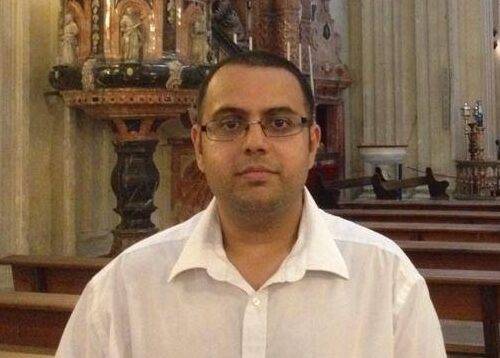Genetic Crossroads: The Middle East and the Science of Human Heredity by Elise Burton, is a sweeping history of ‘genetic nationalism’ in the 20th century covering Iran, Turkey, Israel, Lebanon, Egypt and other Arab countries. Throughout much of the previous century, western researchers were fascinated by the Middle East, believing it to be the meeting point of different peoples, civilisations, cultures and religions. They eagerly wanted to know what the genetic makeup of the region was and they were not alone – as scientific ideas filtered in from Europe, Middle East elites interested in nation-building, also grew fascinated in what lay beneath. Taking us from the First World War until the human genome project in the 2000s, Genetic Crossroads offers the following contentions. Firstly, “genetic research has significantly influenced the notion of race and ethnicity that have been incorporated into Middle Eastern nationalist ideologies, and that these ideologies, at the same time, have influenced how Middle Eastern scientists study genetics.” Secondly, Middle East research subjects and scientific actors have played a big role in international research in human evolution and population genetics and have especially shaped Western genetic research. Lastly, the rise of genetic science created a class of scientific experts who gained power to speak on behalf of communities they did not belong to, creating a new hierarchy within the region.
The study of genetics goes beyond DNA, as the term genes were first proposed in 1905, whereas DNA was not discovered until 1953. For the early genetic researcher, the science of heredity focused on physiological variations, including size and shape of body parts, the presence of different proteins in the blood and inherited diseases. These studies not only influenced ideas about race and ethnicity in the Middle East, which would go on to decide issues around political power and statehood, but also influenced medical and health policies across the region. Genetic research also played a role in international diplomacy. “Turkish scholars in the early Republican period recorded the physical characteristics of the national population as part of a reactionary project against previous Western characterisations of Turks as Asian (“Mongoloid”) migrants to Anatolia, who were racially inferior to Europeans. They mobilised anthropometry to define Turks both as a European race and as autochthonous inhabitants of Anatolia, in order to defend the sovereignty of the Turkish state.” This is a critical observation Burton outlines. A lot of the early research into genetics is shaped by European colonialism for many nation builders. In order to ward off western subjugation, they needed to demonstrate that they are as civilised as Europeans. Thus racial and genetic science was an essential part of Middle Eastern diplomacy. A case, highlighted by the book of Johannes Ruppert, makes for fascinating insight into how this manifested itself. Ruppert was expelled from the Hitler Youth in 1935 after it was discovered that his father was Turkish. The Turkish embassy in Berlin kicked up a fuss, and the Nazi-government, mindful of the need for good relations, was forced to declare Turks were a European people sharing ‘kindred blood’ with Germans. Iran, too, was also thinking about diplomacy and race; one popular suggestion for why the country changed its name from Persia to Iran in 1935, was done to link the country to Aryanness, and was welcomed by the Nazi regime, which saw the Shah as embracing their racial principles.
But the book also explores tensions within the genetic movement. A lot of research tended to focus on minorities and their relationship with the broader nation. Lebanon became a hotbed of competing genetic claims, which was linked to its identity as a nation. French Jesuit research institutes tended to promote claims of Maronite Christians’ non-Arabness and Phoenician identity, while the American University of Beirut became a hotbed of promoting Arabness. An interesting case of how concerns over genetic diversity influenced health policy is the treatment of Mizrahi Jews (Jews from the Arab world and Asia) in Israel. From 1949 onwards, Israel found itself with more and more immigrants from the Arab world. Unlike Jews from Europe, who were quickly absorbed into the society, Arab Jews were forced into quarantine camps and subjected to involuntary medical examinations. These camps enabled Israeli genetic researchers, most of who were of European descent, to collect large amounts of blood samples from the Mizrahis. The sampling of this blood data not only enabled the study of diseases, but also built Israel’s reputation as the world’s leading place for genetic research, which Western institutions wanted to work with quite closely. The research was also shaped by Zionist precepts and so any evidence of Jewish proselytisation and Jewish-Gentile intermarriage was downplayed in favour of the shared Jewishness of all in Israel.
But, as Burton points out in the conclusion, “the persistence of nationalist concepts in Middle Eastern genetic studies does not indicate a rejection of Western models of universal science, nor does it represent the simplistic corruption of objective research through the imposition of retrograde political discourses. Rather, it reflects the thorough integration of Middle Eastern geneticists as collaboration in an international sphere of scientific discourse over the course of the twentieth century.” Genetic Crossroads is a much needed historical intervention into the ongoing debates around nation, belonging, science and the Middle East’s role in genetic science. Delicious details, packed with fascinating stories, this far-reaching study will surely become the standard reference point for discussions on both the history of science in the Middle East and the history of regional nationalism.












